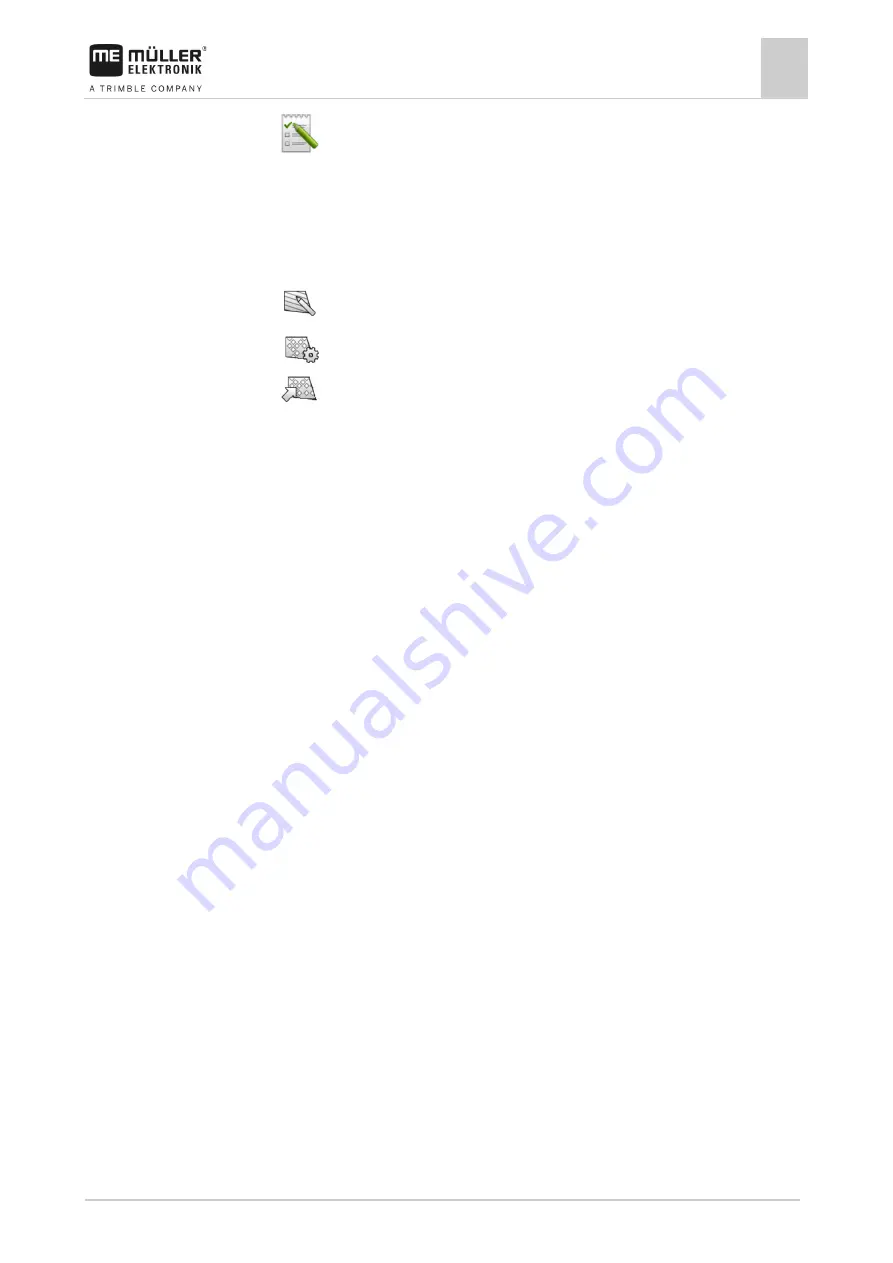
Task management (ISOBUS-TC)
Using prescription maps
10
30322538-02-EN
V9.20191001
73
2.
- Open the ISOBUS-TC application.
3.
Tap “Fields”.
⇨
A list with already created fields appears.
4.
Tap the field for which you want to export data.
⇨
The field properties appear. You can see the previously entered data and several function
icons on the side.
5.
- Open the field view.
6.
- Open the list with all field data.
7.
- Export the field data.
Data on the memory device
During work with TRACK-Leader, two types of data are produced:
▪
Tracks - Everything that is marked in green on the screen. This data describes one single work
process.
– The tracks are automatically saved in TRACK-Leader as soon as the field is deactivated in
ISOBUS-TC.
– You are in the “ngstore” folder on the USB memory device.
– They could be imported for evaluation with TRACK-Guide Desktop.
– Each field is given the name
ISOBUS-TC--PFD
. Whereby PFD stands for the PFD number
of the field in ISOBUS-TC. For example: ISOBUS-TC--2
▪
Changing of fixed field data: Field boundaries, guidance lines, obstacles. This data is not only
important for one work process, it can also be used in the future.
– This data is saved as shp files in the “SHP” folder.
Transferring field data to a different terminal
To transfer all field data to a different terminal:
Operating mode of ISOBUS-TC: Standard
1.
Terminal 1: Export all field data to a USB memory device. [
2.
Terminal 2: Create the field profiles once again. [
3.
Terminal 2: Import all field boundaries, guidance lines etc. from a USB memory device. [
Using prescription maps
Prescription maps are maps that contain information on the quantity of a product (fertilizer, seed,
pesticide) to be spread/applied on each area of the field.
When the prescription map has been loaded, the terminal checks via GPS coordinates of the vehicle
what application rates are needed according to the prescription map and transfers this information to
the appropriate ISOBUS job computer.
10.3.6
10.3.7
Procedure
10.4



























